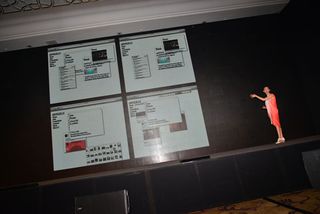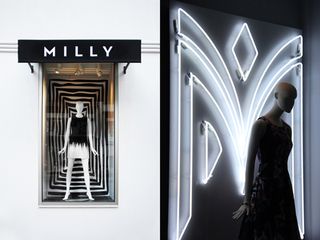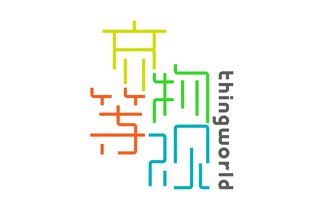7 pro tips for starting a new branding project
Pentagram partner Natasha Jen explains how her team tackles new projects.
It isn't always easy to get hold of Pentagram partner Natasha Jen. So when we bumped into her at Kyoorius Designyatra 2014 in Goa, India, we took the opportunity to ask her a few questions about life at the global design firm, and how she tackles new branding projects.
Jen is the only designer to have progressed from intern to partner in Pentagram's history. In July 2010 she launched her own studio, Njenworks, and since becoming a partner at the New York office in April 2012, has continued to develop her reputation for working across multiple fields and formats, from branding and identity to environmental, exhibition, interactive and beyond.
Pro-bono work is central to her practice – and she delivered an insightful talk on the struggle between balancing budget with creativity on the second day of the conference (you can find out how she does it here).
But branding and identity design also figure strongly in her portfolio. So how do Jen and her team tackle new branding projects? What key questions do they ask? And is it onto say no?
Here are Natasha Jen's seven steps to starting a new branding project…

01. Be honest with yourself
"Not every branding project is suitable to your own process, your own method, your own taste – meaning not every problem is suitable to you. Try to identify that as early as possible and have the courage to decline things that you see as not in your area. That is totally okay. You don't have to be an omnivore to be a successful branding designer – or any designer."
02. Don't let money drive your early stage
"Of course, we always have to be responsible for profit, for finances, but I find it easier to make decisions when I remove money from the equation first. Doing so clarifies a lot of things. People always say "Oh, you're lucky" or "you're naive" [to be able to remove money], but I'm neither. It's very clarifying."

03. Identify what really motivates you
"Is it the process of creating a new spirit – that has a look and feel for clients – that motivates you? Is it the process of creating the strategy – going through a lot of Q&As? Try and identify what motivates you. Once you have a better idea about that you can create better work."
04. Ask the right questions
"One very important question, regardless of the scale or the type of industry a client is in, is: who do you want to be? How do you see yourself? What kind of image do you see yourself being projected into? It's a very big, but critical question because if you can't identify whether it's a corporate, whether it's a celebrity – whatever – when that isn't identified, it doesn't matter what strategy you do or how you design it: it's not going to be right."

05. Identify the goals
"First of all ask: why do they want to do this; why do they want to rebrand? Is it because the logo looks bad? Is it losing market share? Is it because they want to strike a very different attitude? We try to identify goals."
06. Factor in the people
"After identifying the goals, then we try to identify the decision-making process. How are decisions made in this particular organisation? And how particularly for this project? People are such an incredible factor in the result of the design. We try to understand that from the outset of the project."
07. Stay flexible
"There are always a lot of new discoveries that emerge as you go along. You just have to re-adapt and be flexible. We try to always be open to changes and new things that emerge along the way."

Thank you for reading 5 articles this month* Join now for unlimited access
Enjoy your first month for just £1 / $1 / €1
*Read 5 free articles per month without a subscription

Join now for unlimited access
Try first month for just £1 / $1 / €1
Get the Creative Bloq Newsletter
Daily design news, reviews, how-tos and more, as picked by the editors.

Julia is editor-in-chief, retail at Future Ltd, where she works in e-commerce across a number of consumer lifestyle brands. A former editor of design website Creative Bloq, she’s also worked on a variety of print titles, and was part of the team that launched consumer tech website TechRadar. She's been writing about art, design and technology for over 15 years.